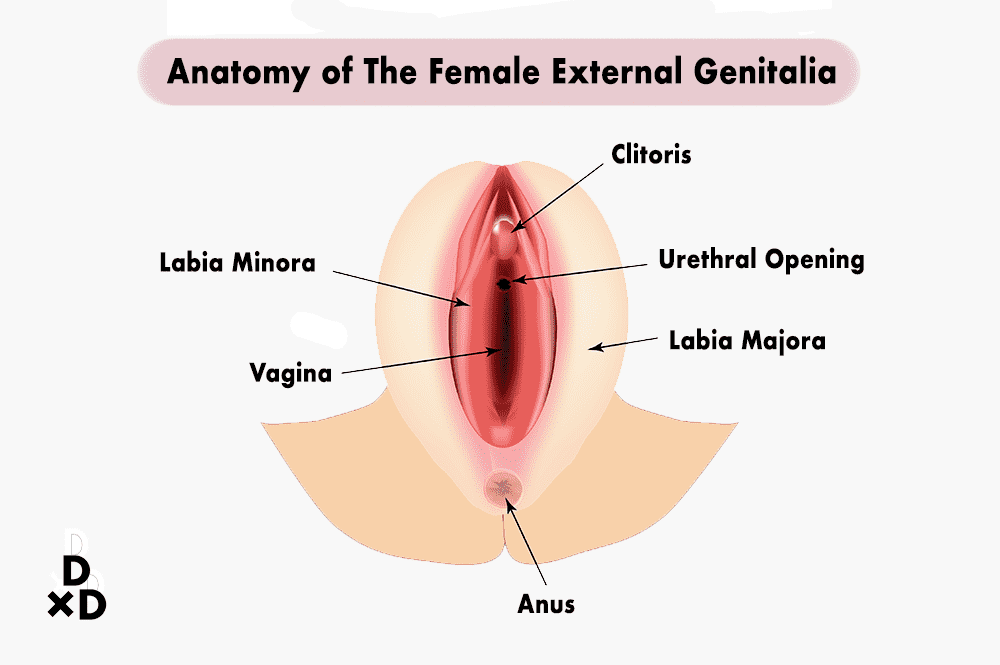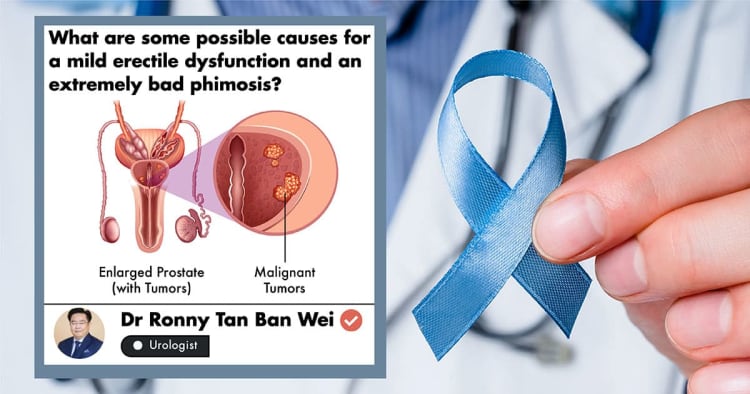Introduction
Sex is meant to be enjoyable. However, it can occasionally end up being less pleasurable or painful for ladies. Other than infections, displeasure or painful sex can be caused by changes in the vagina, such as vaginal walls laxity or vaginal dryness. Vaginal rejuvenation can address these issues and bring back pleasurable, pain-free sex.
Read on to find out everything you need to know about vaginal rejuvenation.
What is vaginal rejuvenation?
Vaginal rejuvenation is a broad term that encompasses any vaginal corrective procedures that changes or alters the structure of the vaginal structure [1]. This can either be internal or external.
Vaginal rejuvenation is meant to improve its appearance, improve sexual functions, or correct problems that occur after giving birth or during the aging process by helping to tone, tighten and strengthen vaginal muscles. It is also usually associated with conditions such as vaginal laxity and stress urinary incontinence. [2]
Why do women do it?
Vaginal rejuvenation can help with a number of concerns that women may experience. One reason why women opt for vaginal rejuvenation is vaginal dryness. This frequently occurs after menopause due to a decrease in estrogen levels which helps to keep the vagina lubricated.
Vaginal dryness can result in pain during sex, and even urinary symptoms such as a burning sensation during urination and an increased frequency in urination. [3]
Another reason is the loss of elasticity in the vaginal walls. While this is a normal part of aging, stretching of the vaginal wall and surrounding structures during childbirth can damage collagen fibres and result in a loss of vaginal wall elasticity and lax pelvic supporting tissue [4].
Vaginal dryness and laxity can cause a number of problems, such as decreased pleasure during sex, vaginal infections as well as stress urinary incontinence [3]. Lastly, women also opt for vaginal rejuvenation to improve the appearance of her vagina, such as having an oversized labia or mon pubis [5].
What are the types of treatments for vaginal rejuvenation?
There are two main categories for vaginal rejuvenation – surgical and non-surgical.
Surgical vaginal rejuvenation
Surgical vaginal rejuvenation helps to improve the shape, size and function of the vagina. There are several surgical procedures available such as [6]:

- Clitoral hood reduction: Reduction of size and area of the clitoral hood to expose the glans of the clitoris
- Labiaplasty: Reduction of the labia minora (flaps of skin on either sides of the vaginal opening)
- Labia majoraplasty: Reduction of the labia majora (outer lips of the vagina)
- Monsplasty: Removal of excess skin and fatty tissues from the fat pad over your pubic bone
Non-surgical vaginal rejuvenation
Non-surgical vaginal rejuvenation has been gaining popularity due to great results seen and its minimally invasive nature, which translates to a shorter recovery period and a lower risk of developing complications such as bleeding, infection, and scarring. Non-surgical vaginal rejuvenation can be done in the form of energy-based devices and injectables, such as fillers [7].
Energy-based devices
- Laser technology such as fractional CO2 laser and erbium YAG laser uses energy in the mid-infrared invisible light spectrum to restore elasticity and hydration to the vagina as well as stimulate collagen production. Examples of laser technology include FemTouch, MonaLisa Touch, FemiLift and Fotona’s Intimalase.
- Radiofrequency (RF) technology uses focused electromagnetic waves to help tighten the vaginal canal and help improve vaginal laxity. Examples of RF technology include ThermiVa and Viveve.
Injectables
- Hyaluronic acid (HA) and combined platelet-rich plasma (PRP) are used to add volume in the posterior vaginal wall [7] and are also used in a procedure called G-spot amplification, which helps to make the G-spot more prominent and improve chances of vaginal orgasms.
- Gore-mycromesh, a biocompatible mesh can be inserted in the posterior vaginal wall for vagina tightening. [8]
- Silicone threads can be inserted under the vagina submucosa (a layer of the vaginal wall) to help tighten the vaginal wall.
How does energy-based vaginal rejuvenation work?
Energy-based vaginal rejuvenation generally employs two types of technology – laser and radiofrequency. Both of these are minimally invasive and reduce the risks of complications that may otherwise arise from surgical rejuvenation procedures [8].
Laser technology
Fractional CO2 laser is a form of ablative laser that targets certain parts of the vaginal and vulvar tissues. The laser absorbs water within the cells and causes microzones of injury to the vaginal mucosal lining. This improves blood flow in the vaginal canal as well as promotes the collagen remodelling process of the vaginal mucous epithelium layer [4], [9].
Fractional CO2 laser works to [10], [11]:
- Stimulate collagen and elastin production in vaginal walls
- Improve the muscle tone and functions of the vaginal wall
- Reduce vaginal dryness
As the water absorption of a fractional CO2 laser is lower than an erbium YAG laser, buildup of excess heat can cause unintended damage to surrounding tissue, resulting in longer recovery time as well as greater discomfort. Therefore, this is not my choice when it comes to vaginal tightening.
Fotona’s Intimalase is a gynaecological laser that uses Smooth mode, a form of non-ablative Er:YAG laser pulse duration. When applied to the vaginal mucosal surface, controlled and gentle photothermal heating stimulates collagen and elastin production which thickens and rejuvenates the vaginal mucosal wall [4], [12] and improves blood circulation.
This is a safe and almost pain-free method involving minimal recovery time, at the same time achieving outcomes of vaginal rejuvenation and improvement in sexual function. [13]
RF technology
RF technology uses radiofrequency waves to heat up the lining of the vagina and vulva. This process restructures existing collagen and elastin as well as stimulates their production, and improves blood flow to the area. These result in the tightening and contraction of vaginal tissue, as well as a reduction in vaginal dryness [14]. As such, RF technology can improve sexual function and symptoms related to vaginal dryness.
How is Fotona Intimalase better than fractional CO2 laser and RF technology?
Unlike fractional CO2 lasers which are ablative, less controlled, and give rise to downtime of pain, swelling, and discomfort, Fotona Intimalase is a non-ablative laser that tones and thickens the vaginal mucosa using controlled heating.
Therefore, the use of Fotona Intimalase is safer, less uncomfortable and boasts a faster recovery over other gynaecological fractional CO2 lasers. With regard to RF treatments, its success depends to an extent on each individual’s skin electrical conductivity, which can vary from person to person.
Hence, treatment with RF is less precise - some treatments may be less effective, while overheating may take place in other instances with potential complications such as burns.
Fotona Intimalase uses a small, 360° rotatable hand-held device while RF technology typically uses devices that are non-rotatable, resulting in a repetitive “in-out” motion during the procedure. This may come across as embarrassing and uncomfortable for some ladies. [13]
One treatment session with Fotona Intimalase is also able to produce results, whereas treatments with RF technology typically requires more than one treatment session to see results. With fewer treatments required to achieve similar results, it is more cost-effective to perform vagina rejuvenation with Fotona Intimalase.
Fotona Intimalase has been proven to be safe and effective from its extensive clinical studies that measure both short term and long term results and side effects. It also has a better side effect profile (milder and fewer adverse side effects) compared to fractional CO2 laser and RF technology, which has been associated with side effects such as pain in the vagina, bladder and urethra [15].
What can I expect during a Fotona Intimalase (non-ablative laser treatment) for vaginal rejuvenation?
Before the start of the treatment, patients will have to give informed consent. The doctor will discuss the treatment with you, such as how the treatment is going to proceed and what to expect.
Before commencing treatment, a pap smear and vaginal examination is needed to ensure that you are free of any infection, lesions, or abnormalities that may cause complications to the procedure. The doctor will perform the examination with you lying down in a private setting. In a pap smear, samples of your cervical cells will be taken and sent to the laboratory for analysis.
With normal results and examination, vaginal rejuvenation laser treatment can proceed, with anaesthetic cream and lubricant applied to the labia for a smooth experience with minimal discomfort. Protective glasses need to be worn to shield your eyes from the laser.
The laser probe to be inserted into your vagina is a small hand-held device, with a 360° rotating handpiece. After insertion, the laser delivers an optimal sequence of pulses to the vaginal mucosal, resulting in the strengthening and rejuvenation of the vaginal wall. The procedure lasts about 10-15 minutes and feels similar to having a pap smear test. [16]
After the procedure, your doctor will give you some aftercare tips and you are free to leave. This usually includes an abstinence from sexual activities and lubrication.
How effective is Fotona Intimalase for vaginal rejuvenation?
Fotona’s Intimalase is a modern vaginal rejuvenation technology that is highly effective and safe. There is little downtime and visible results are also observed after just one treatment session. Clinical studies completed on women after a single treatment session using Fotona Intimalase observed results such as [13]:
- 95% of women observed increase in friction and sensation during sex
- 57% of women observed an improvement in the quality of orgasm
- 14% of women observed an increase in the frequency of orgasm
- Only 5% of women did not observe any discernible improvement
In another study, 93% of women who underwent 2-3 treatment sessions observed improvements in their overall sexual satisfaction after 3 months [12].
Apart from mere short term results, Fotona Intimalase is also sustainable and effective in the long run. There were also no major adverse effects observed and effects of the vaginal rejuvenation lasted beyond 16 months.
What are the benefits of vaginal rejuvenation?

There are personal and health benefits to vaginal rejuvenation, such as [17], [18], [19]:
- Increased sexual pleasure
- Vagina tightening
- Improve stress urinary incontinence
- Reduce risks of vaginal infections
- Increase vaginal lubrication
- Repair scarring and trauma on inner walls of vagina due to childbirth
What are the complications of vaginal rejuvenation?
As with all procedures, complications can come along with it. The United States Food & Drug Administration has also warned consumers against the use of energy-based devices for vaginal rejuvenation [20]. None of the RF devices have been FDA-approved.
Vaginal rejuvenation can cause inflammation, resulting in the scarring of the vaginal tissues, which gives an overall “vagina tightening” effect [21]. Studies have also shown that vaginal rejuvenation can lead to burns as well as pain during sexual intercourse [22].
Researchers are also concerned about the possible complications that lasers used during vaginal rejuvenation may have on the surrounding organs such as the rectum, bladder and urethra [23].
It is hence important to find an aesthetic doctor that is properly skilled and highly experienced if you are looking to do vaginal rejuvenation, to avoid any risks of complications from arising.
Who are suitable candidates for vaginal rejuvenation?
Women who are older than 18 and have had one or more vaginal deliveries or are nearing menopause are suitable candidates for vaginal rejuvenation [24]. On top of that, they should experience [10], [25]:
- Loss of vagina tightness
- Vagina atrophy (thinning, drying or inflammation of the vaginal walls)
- Suffer from bladder leakage when laughing or running
- Painful sexual intercourse
- Lack of sensation or friction during sex
Are the results of vaginal rejuvenation treatment permanent? How many sessions do I have to undergo?
The results of a surgical vaginal rejuvenation are permanent. However, the results of non-surgical vaginal rejuvenation are not permanent and its effects are expected to last up to 3 years [26].
2-4 sessions would typically be required for vaginal rejuvenation. Vagina rejuvention using RF would typically require more sessions due to the more subtle results. This will depend on how much work is required before achieving the ideal result.
Most clinics would recommend customers undergo non-surgical vaginal rejuvenation every 6 months to maintain their results [27].
Are there any alternative treatments for vaginal rejuvenation?
For those who do not want to undergo surgery or are unwilling to do regular non-surgical vaginal rejuvenation, there are some alternatives that can help in vaginal rejuvenation [28], [29].
- Pelvic floor exercises
Pelvic floor exercises such as Kegel exercises consist of steps that contract and relax your pelvic floor muscles. This can help to tighten your vaginal muscles and improve sensation during sexual intercourse.
- Yoga and pilates
Yoga and pilates can also help to tighten and overcome the loss of elasticity of the vaginal muscles by stretching the body and providing elasticity.
- Healthy diet
Having a healthy diet can help keep your vagina healthy and help in vaginal rejuvenation. Foods high in estrogen such as carrots, berries, whole wheat, fish and eggs can help strengthen the pelvic floor and tighten your vagina.
What are aftercare tips for vaginal rejuvenation?
Some aftercare tips you can use after completing your vaginal rejuvenation session includes [30]:
- Plenty of rest and sleep to help with muscle repair and recovery in your vagina
- Avoid sexual intercourse for a few days
- Maintain good hygiene.
For those who underwent surgical vaginal rejuvenation, the recovery will take longer than those who opted for non-surgical vaginal rejuvenation. Additional aftercare tips to take note of include [31]:
- Avoid strenuous activities such as lifting heavy weights.
- Place ice packs on incision sites to reduce swelling and bruising for the first 2 days post-operation.
- Avoid irritation or pressure around the incision sites.
- Wear loose clothes and cotton underwear.
What are the costs of vaginal rejuvenation in Singapore?
Vaginal rejuvenation can be costly, with each session of non-surgical vaginal tightening costing at least $1,000, while surgical vaginal rejuvenation can cost more than $3,000. Costs of the procedures can also vary depending on the location of the clinic, the doctor’s skills and experiences as well as the brand and type of technology offered at the clinic.
Non-surgical vaginal rejuvenation
- FemiLift: $1,000-$1,500 per session [32], [33]
- Monalisa: $2,500 for 3 sessions [34]
- ThermiVa: $2,500-$3,500
- Viveve: $1,800-$3,000 [35]
- Fotona Intimalase: about $1,200 [36]
Surgical vaginal rejuvenation
Conclusion
Vaginal health is important to every woman. With age and childbirth, a lady’s vagina may not be in tip-top shape as compared to before. This may result in decreased sexual satisfaction and stress urinary incontinence. In these cases, vaginal rejuvenation may be the solution to your concerns.
Ultimately, as with any procedure, it is important to ensure that you are in the hands of an experienced and trusted doctor.













